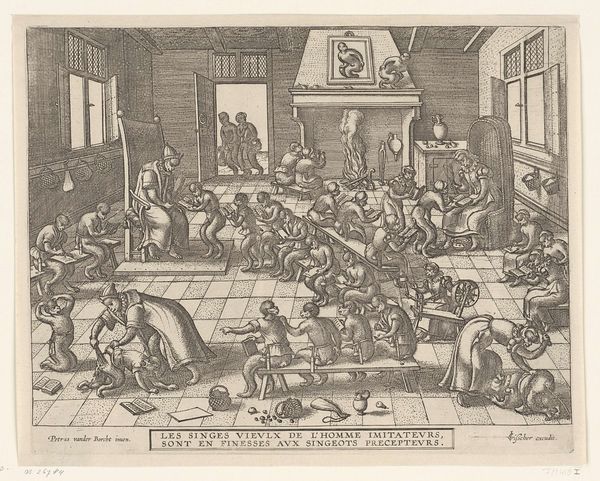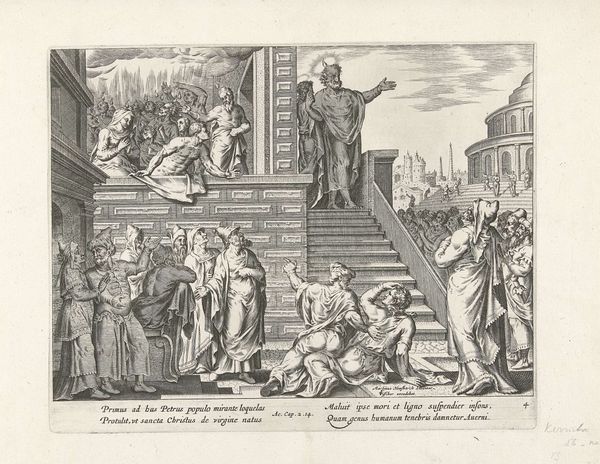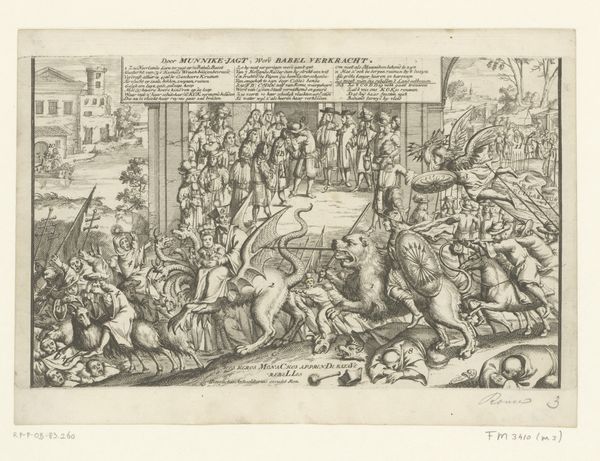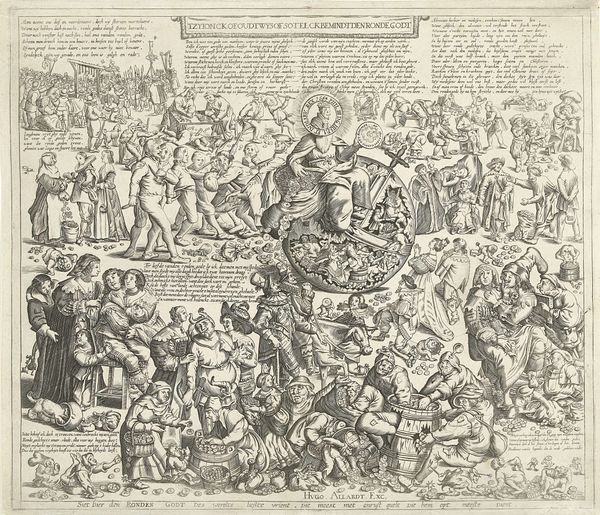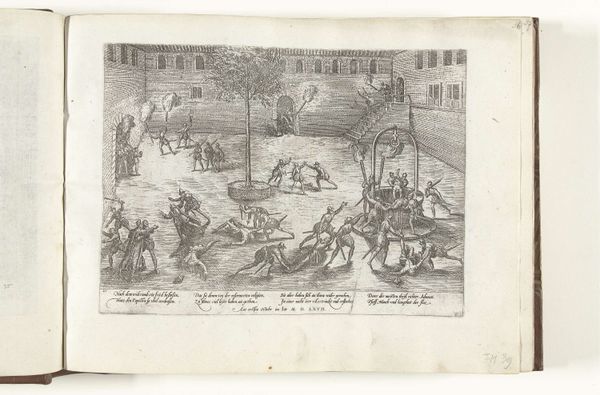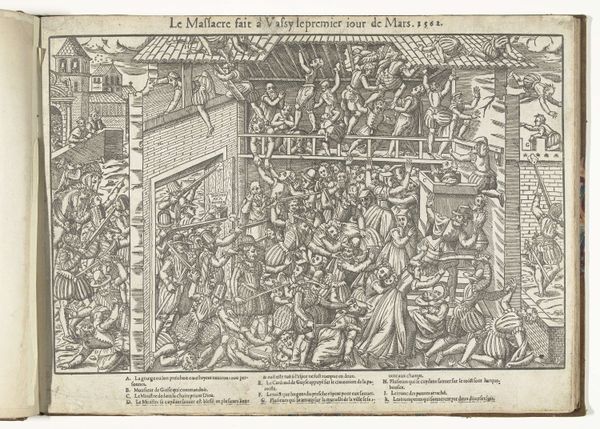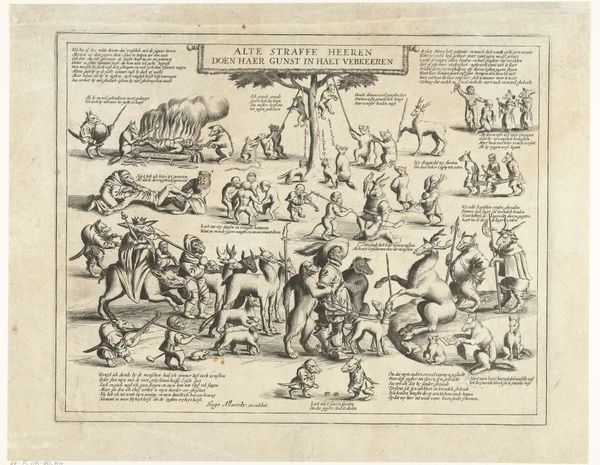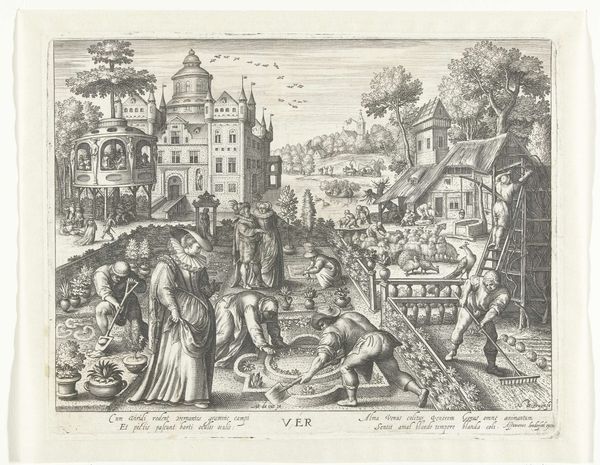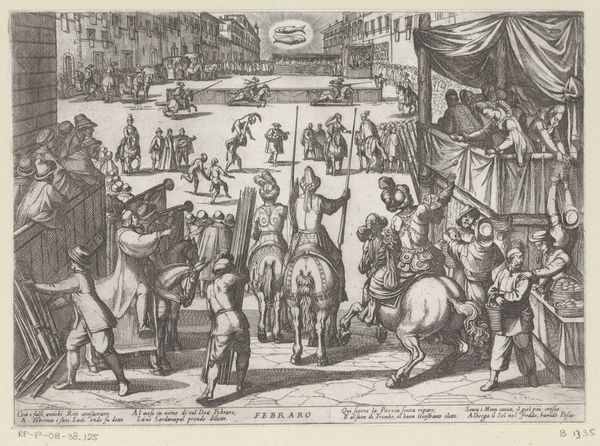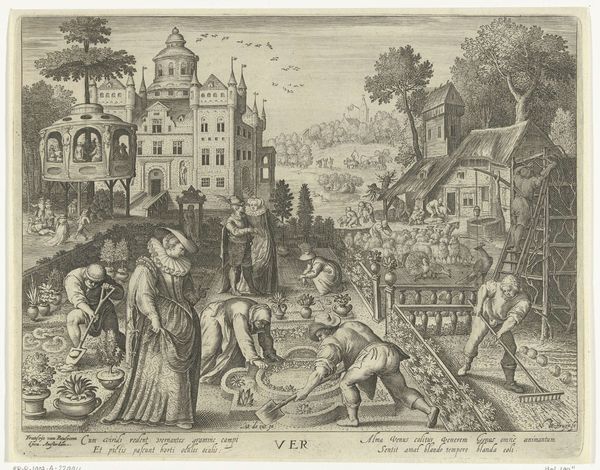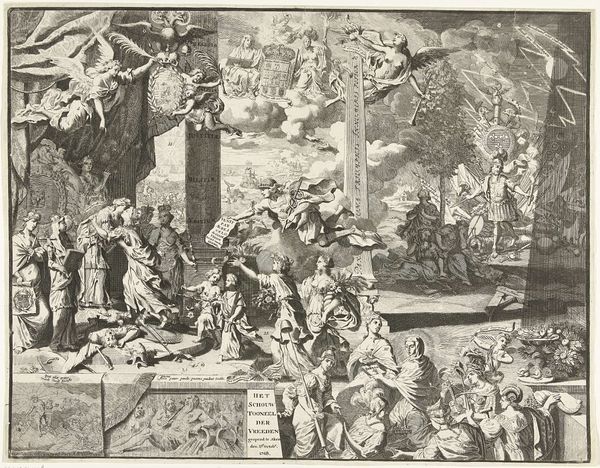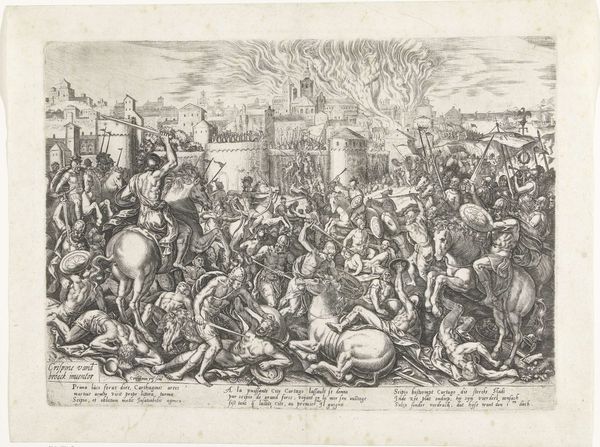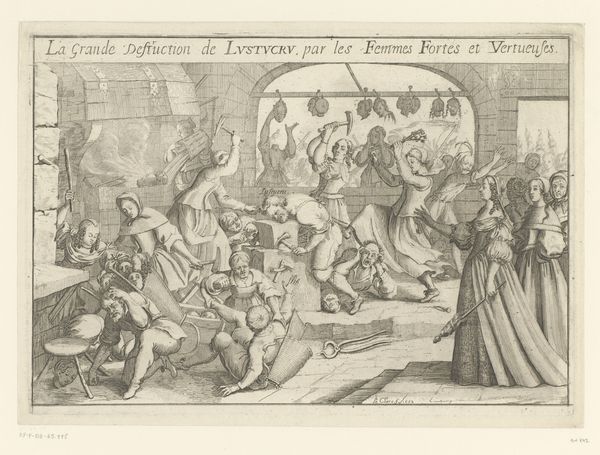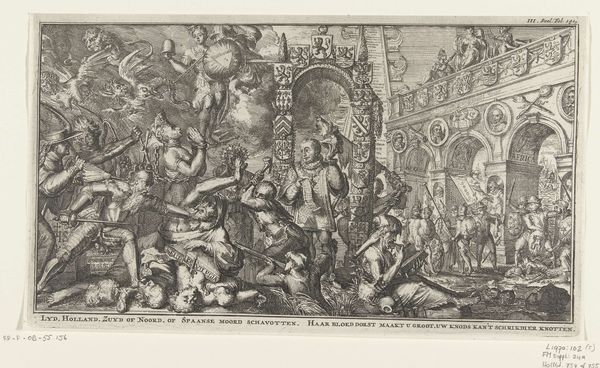
print, engraving
#
comic strip sketch
#
medieval
#
narrative-art
#
mechanical pen drawing
# print
#
pen illustration
#
pen sketch
#
personal sketchbook
#
pen-ink sketch
#
pen work
#
sketchbook drawing
#
history-painting
#
storyboard and sketchbook work
#
sketchbook art
#
engraving
Dimensions: height 377 mm, width 505 mm
Copyright: Rijks Museum: Open Domain
Editor: Here we have Jacques Tortorel's print from 1570, titled "Moord op de protestanten te Cahors, 1561," or "Murder of the Protestants in Cahors, 1561." It’s… well, it's pretty intense. The stark black and white contrasts really amplify the violence, and the composition feels almost claustrophobic with so much happening at once. What catches your eye about this work? Curator: Initially, the intricate linework arrests my attention. Tortorel has meticulously crafted this scene. Note how the density of the lines varies, creating a sense of depth and texture despite the monochromatic palette. Consider also the dynamic arrangement: two distinct tiers separated by the architectural feature, yet united by the escalating action. It leads the eye systematically, doesn’t it? Editor: It does, almost like a graphic novel. So, beyond the aesthetic arrangement, what do you make of these choices, artistically? Curator: The formal choices heighten the impact. The rigid structure of the buildings and walls juxtaposed with the chaotic movement of the figures creates a visual tension. Note how the lines converge and diverge to emphasise specific events, framing areas of intense drama and leading our gaze through a carefully choreographed sequence of violence. The repetition of forms, the angles of weapons and bodies, almost builds into a crescendo, no? Editor: I see what you mean. It’s like the visual language itself reinforces the brutality of the event. So, by emphasizing these compositional choices, you’re steering away from the more overt, historical aspects? Curator: Precisely. While the historical context undeniably informs the work, a formalist reading focuses on the elements of design. The balance of light and shadow, the rhythm of forms, the spatial relationships—these are not merely representational tools, but actively shape the viewer's experience and interpretation. Editor: That's fascinating. I always considered prints from this era primarily for their historical documentation. It is insightful to see how we can decode visual design here to have such significant effect. Curator: Indeed. Examining the formal elements allows us to appreciate Tortorel’s manipulation of line, form, and composition. This provides access to deeper understanding, even centuries removed.
Comments
No comments
Be the first to comment and join the conversation on the ultimate creative platform.
